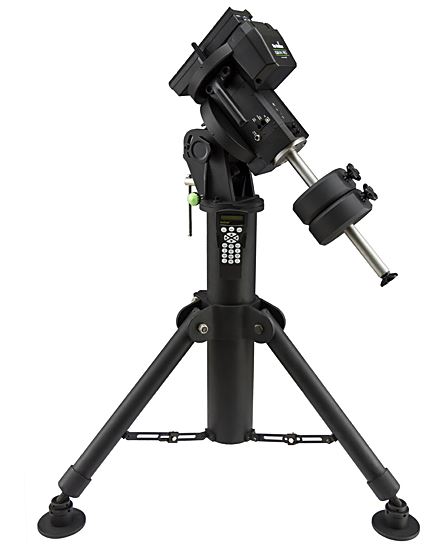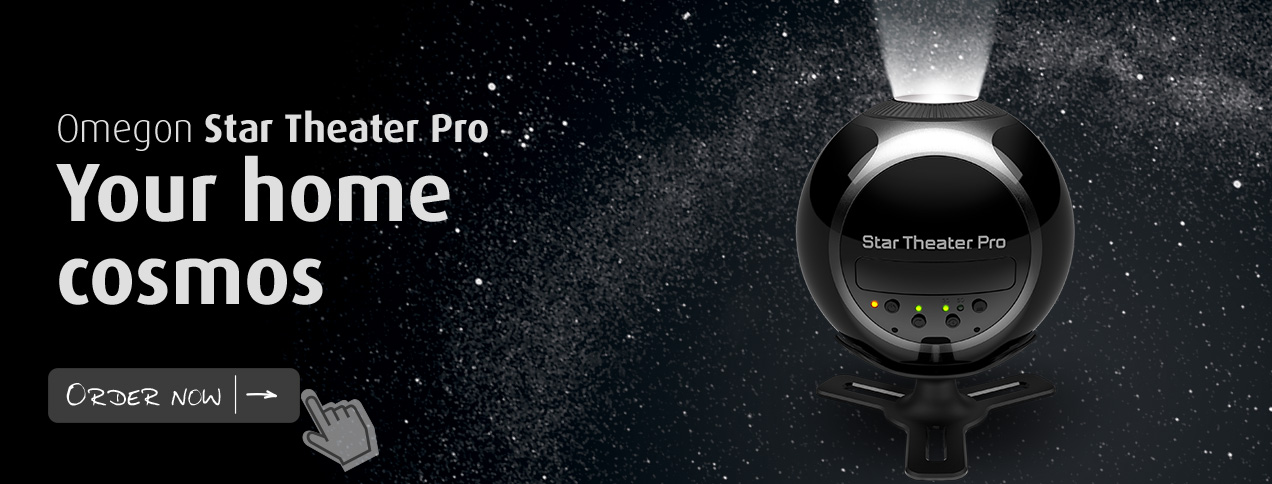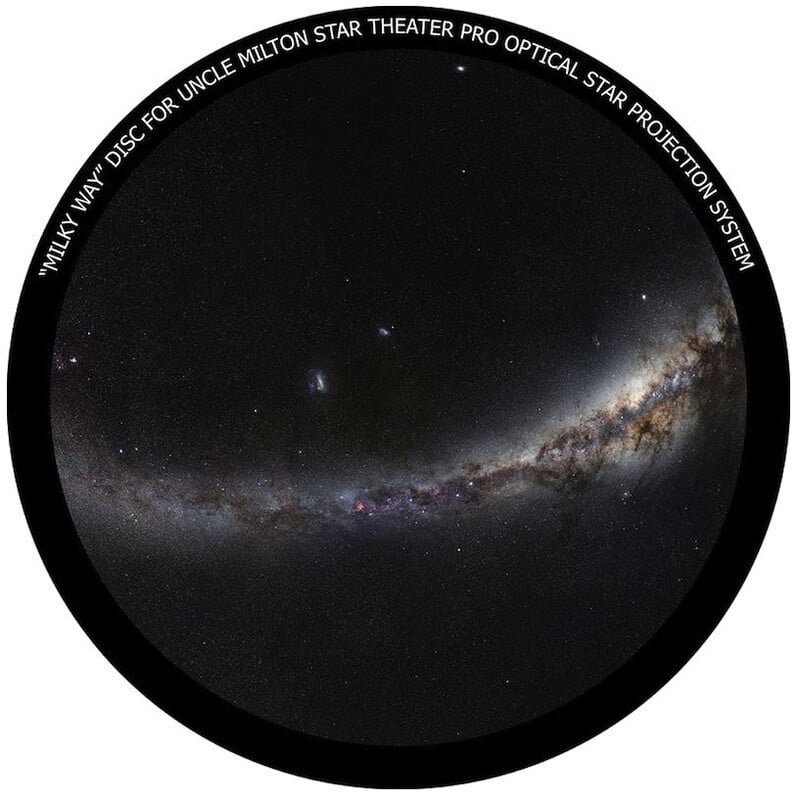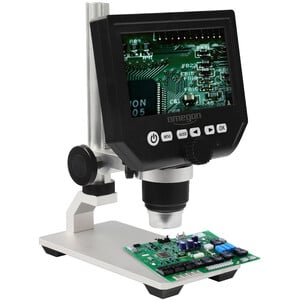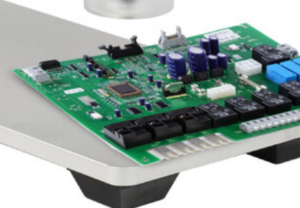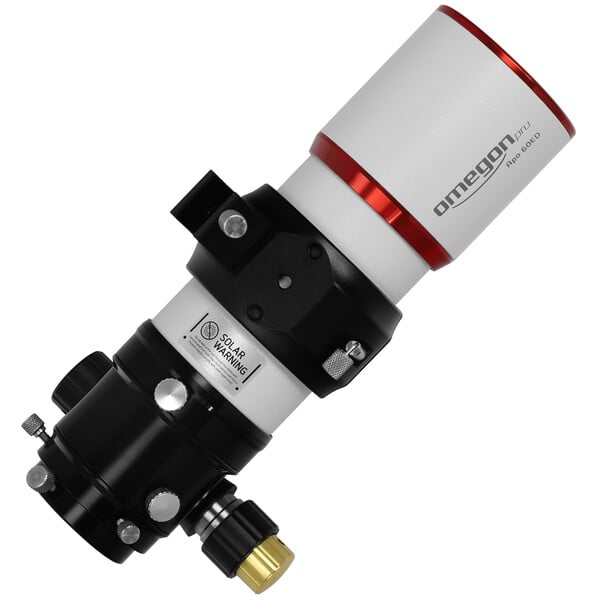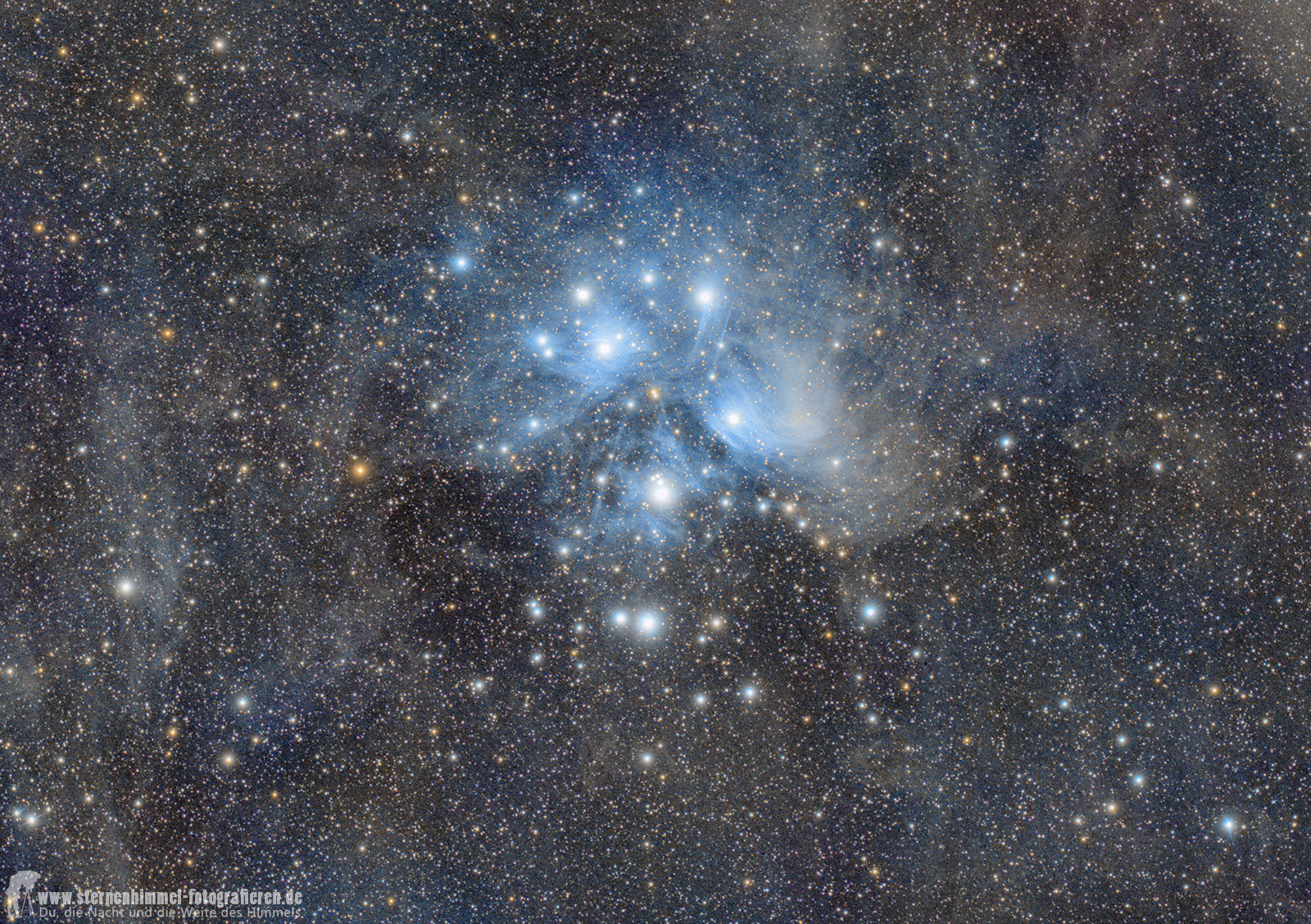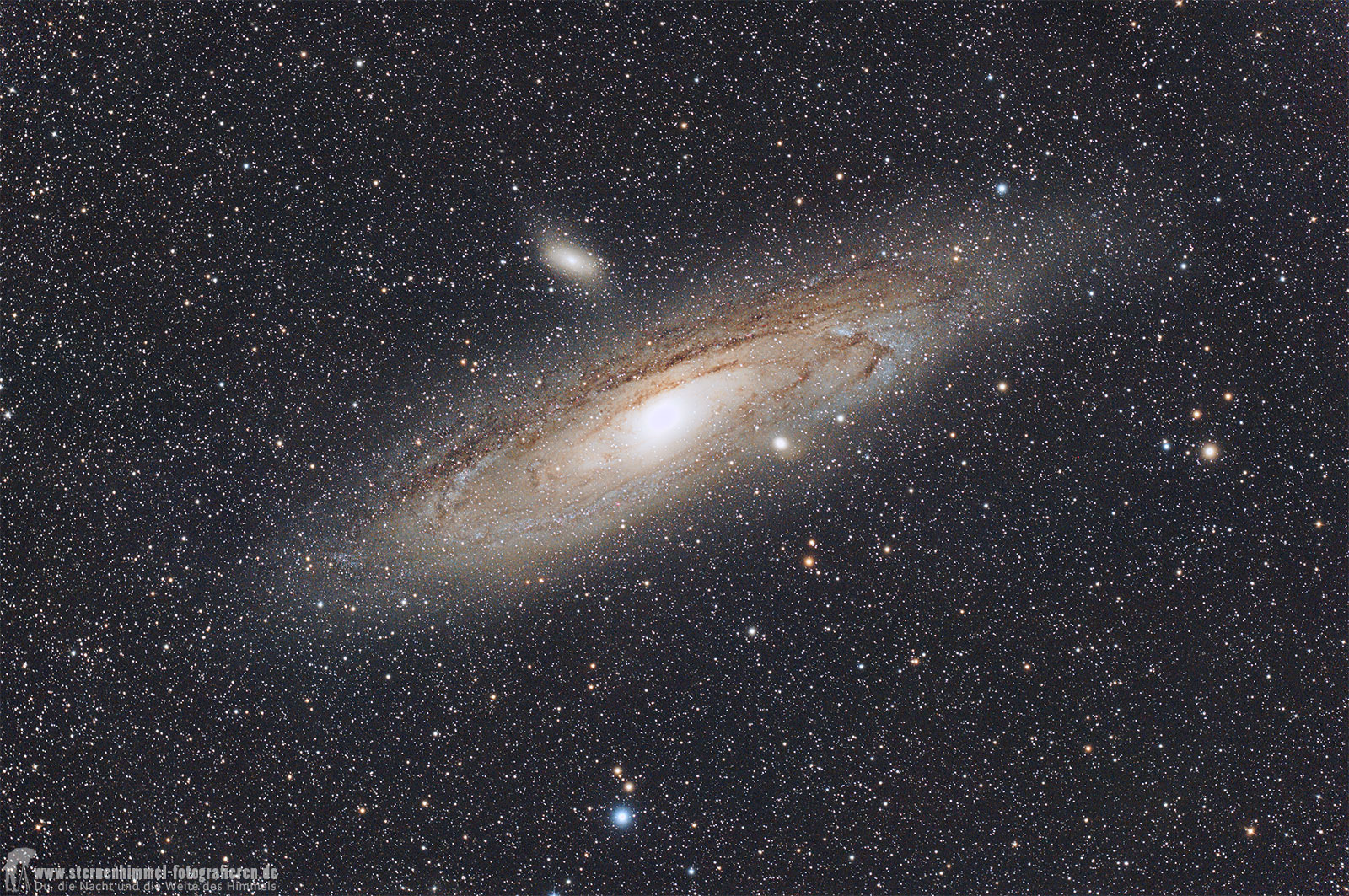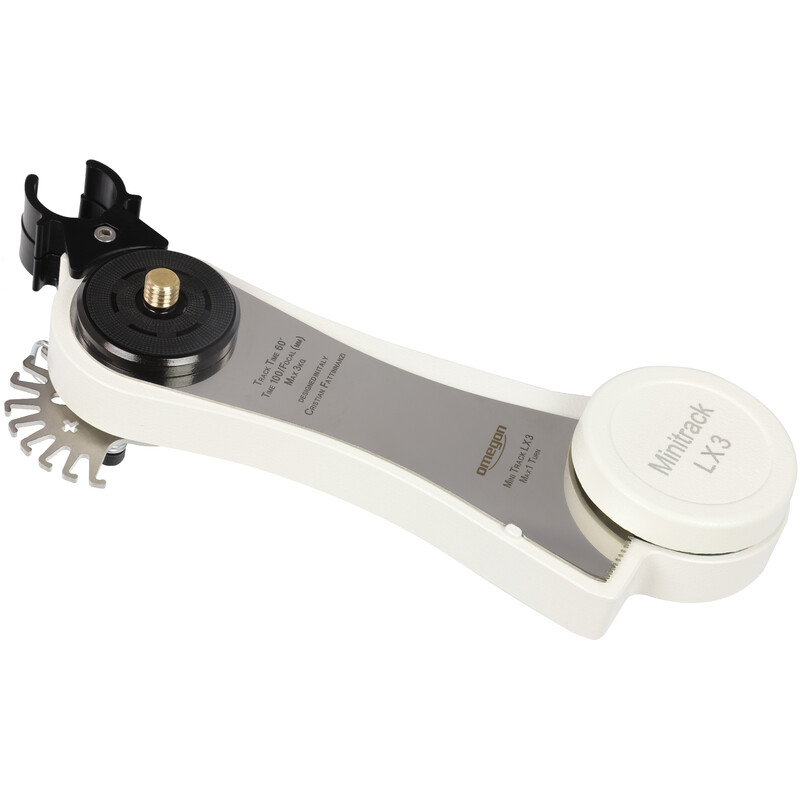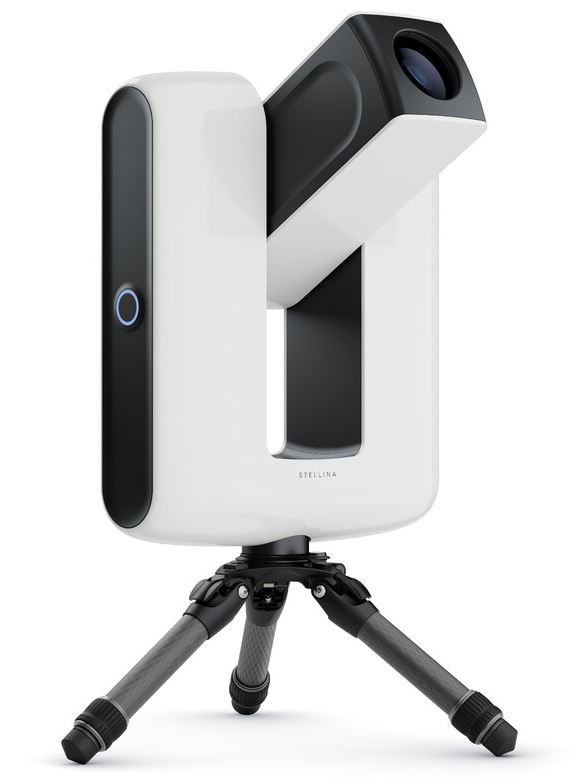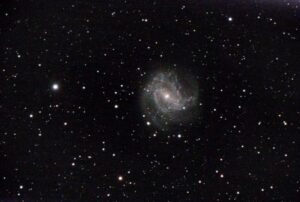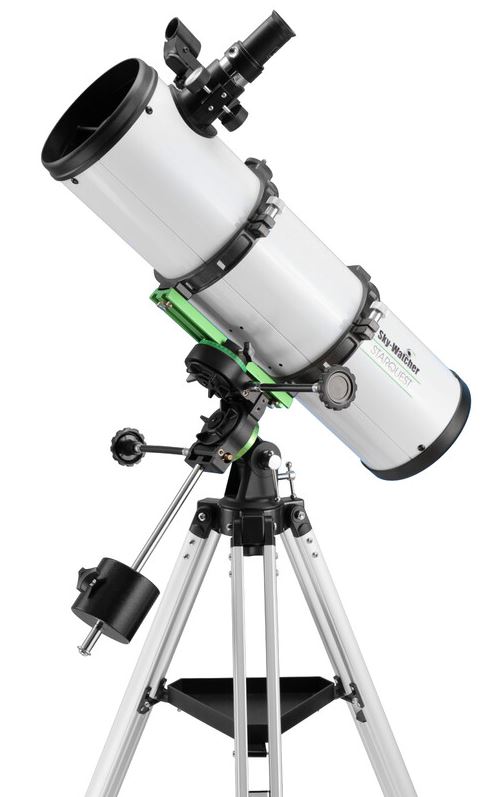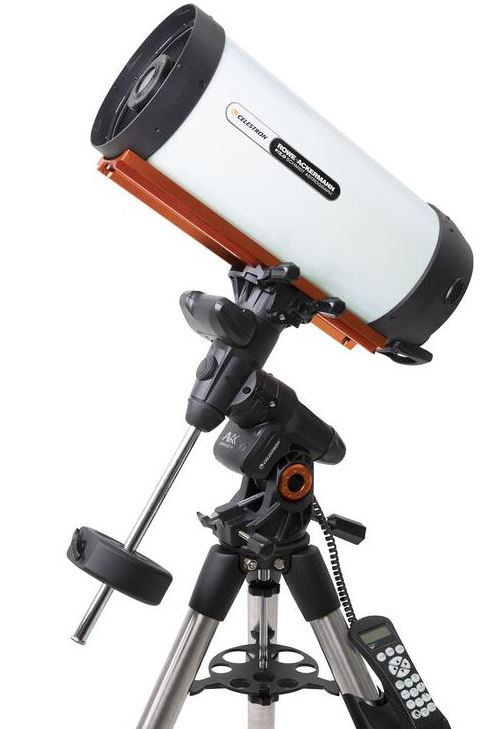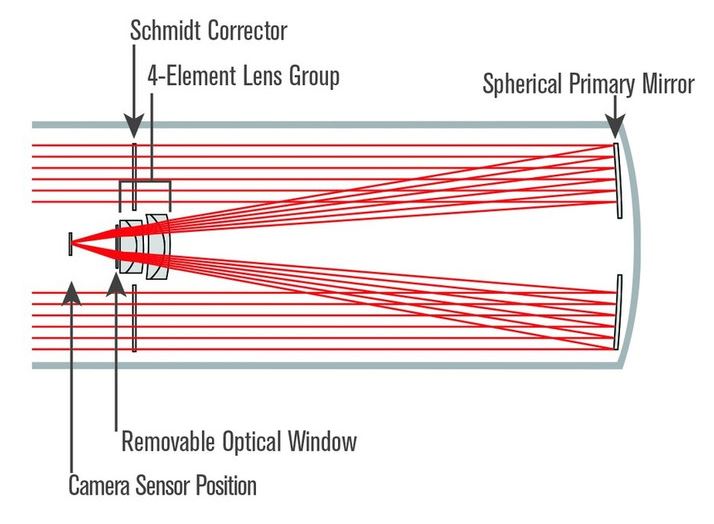Skywatcher’s EQ8 series astronomical mounts are the most capable models from this manufacturer. They can carry telescopes and accessories weighing up to 50 kilograms! This makes EQ8 mounts particularly interesting for observatories – no matter whether garden, school or club observatories.
Skywatcher has updated its EQ8 mount and now offers it in two versions: the EQ8-R and EQ8-RH mounts. The EQ8-RH version has a high-resolution Renishaw encoder on the right ascension axis. This eliminates the need for tracking control during astrophotography.
Both versions of the EQ8-R mount come supplied with the Skywatcher’s proven SynScan control.
These latest EQ8 models offer the following improvements as compared to the initial version:
- Internal cable routing prevents cable clutter and cable damage
- More connection options for accessories: 4x USB, 3x 12 volt outputs
- Optimized positioning of the drive motors for improved balance
- Improved clutches on the axes for a more secure grip
- Improved clamping screws on the prism clamp for greater comfort and greater clamping force
- Belt drive on the declination axis for smoother running
Skywatcher offers a special tripod for its EQ8 mount. The tripod also allows portable use of the mount, but does require two people for setting it up.
If you want to set up the mount on a fixed pier, you can simply order the EQ8 mount without the tripod. The tripod may also be ordered at a later date. All versions of the EQ8 mount can be found here at Astroshop.
With its EQ8-R, Skywatcher offers a modern mount for large OTAs – which the latest stage of development has made almost perfect!

